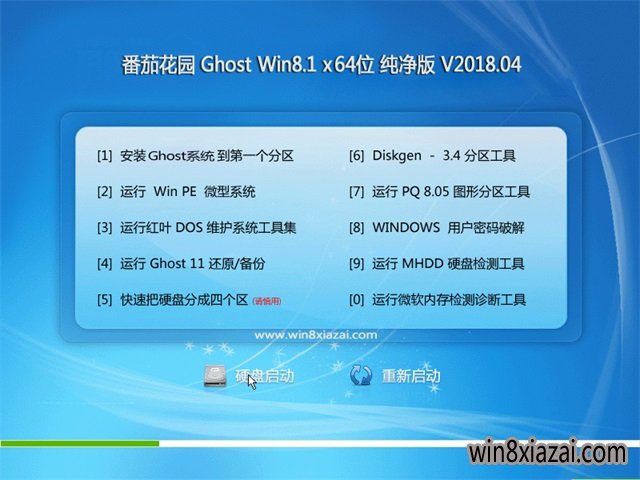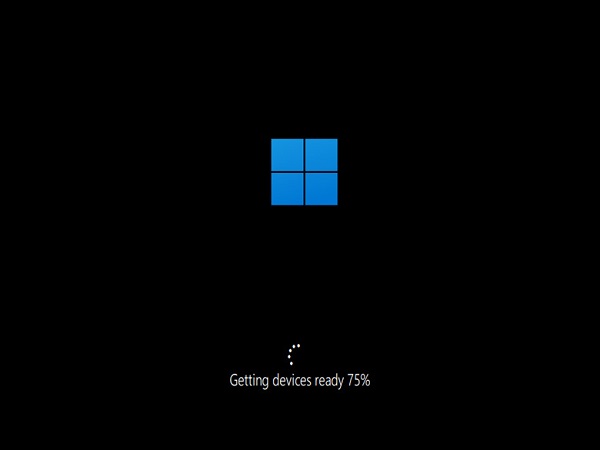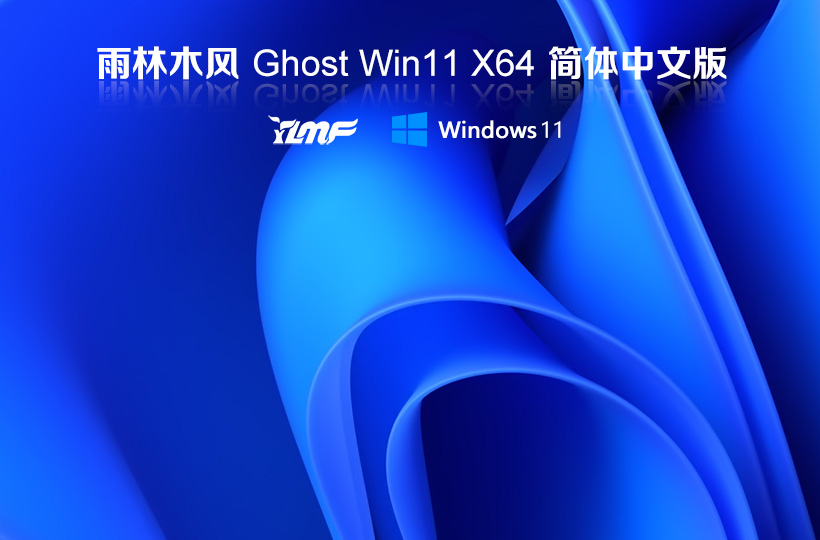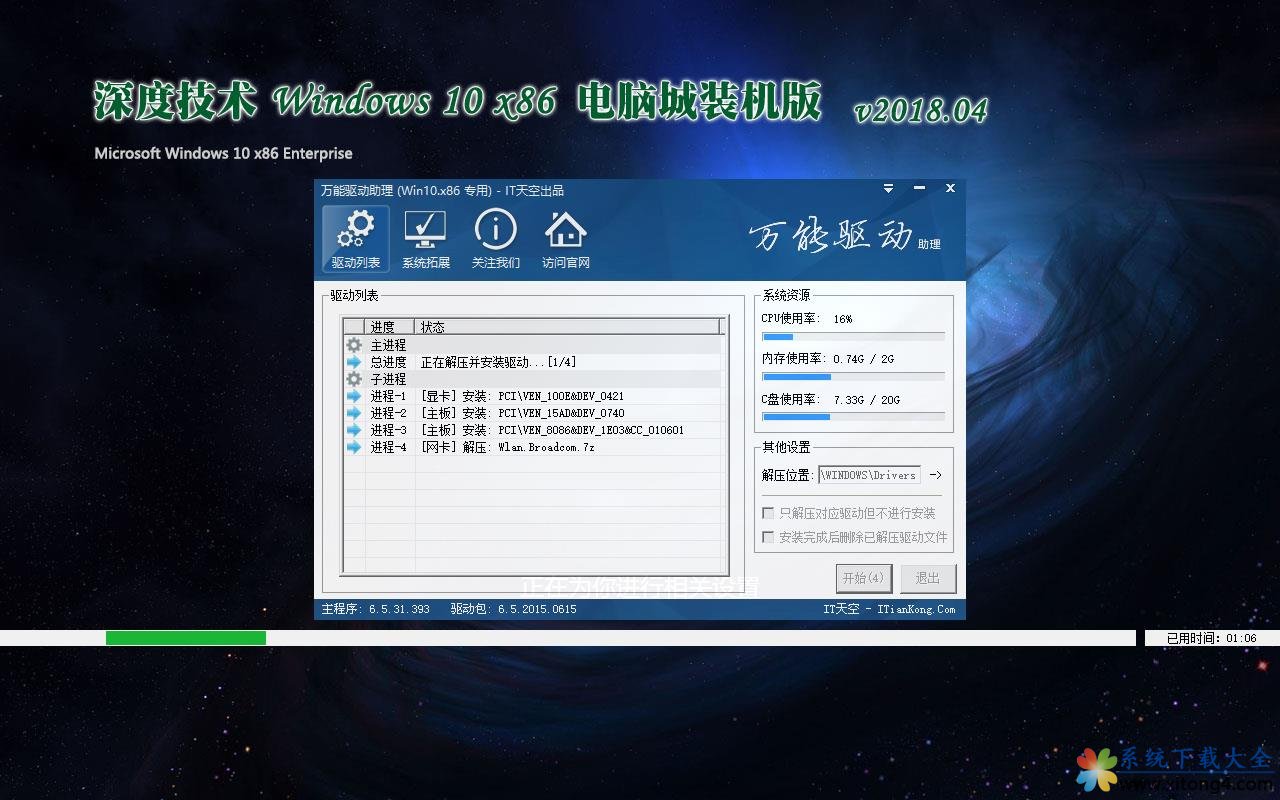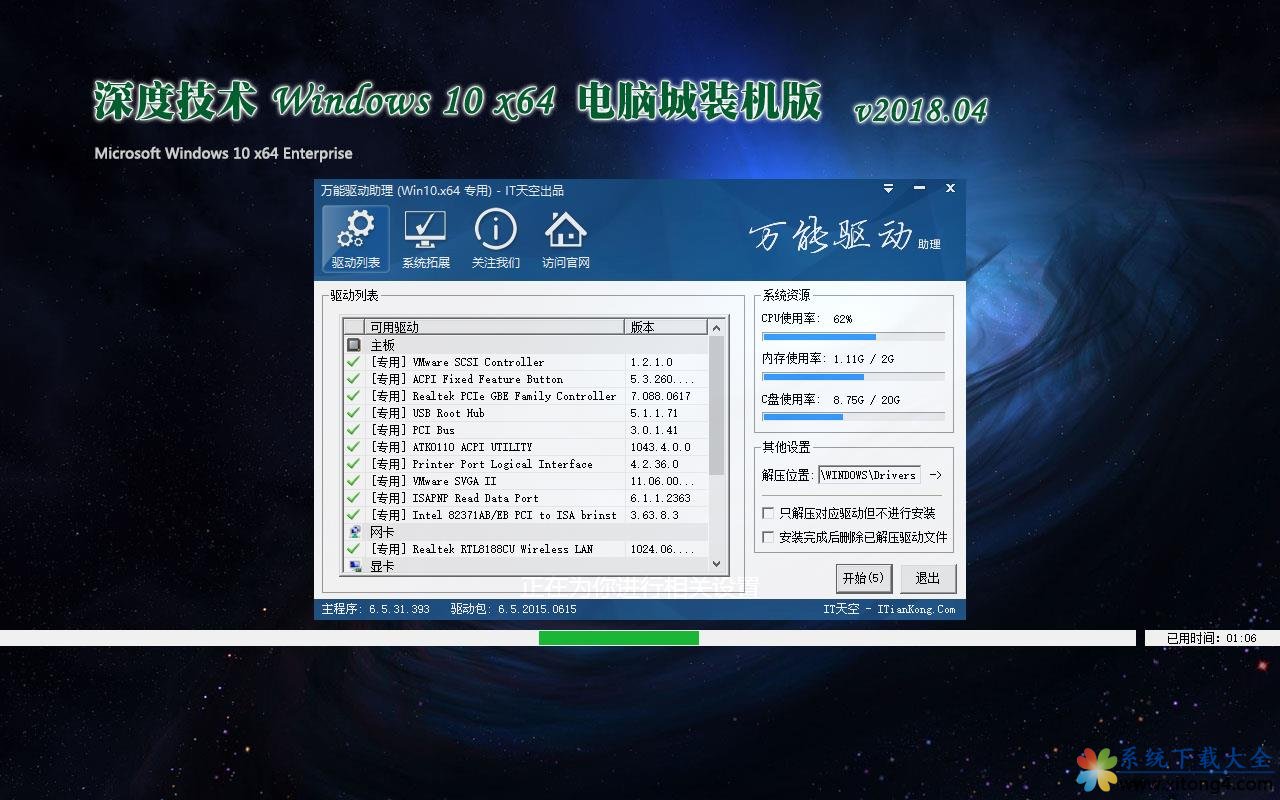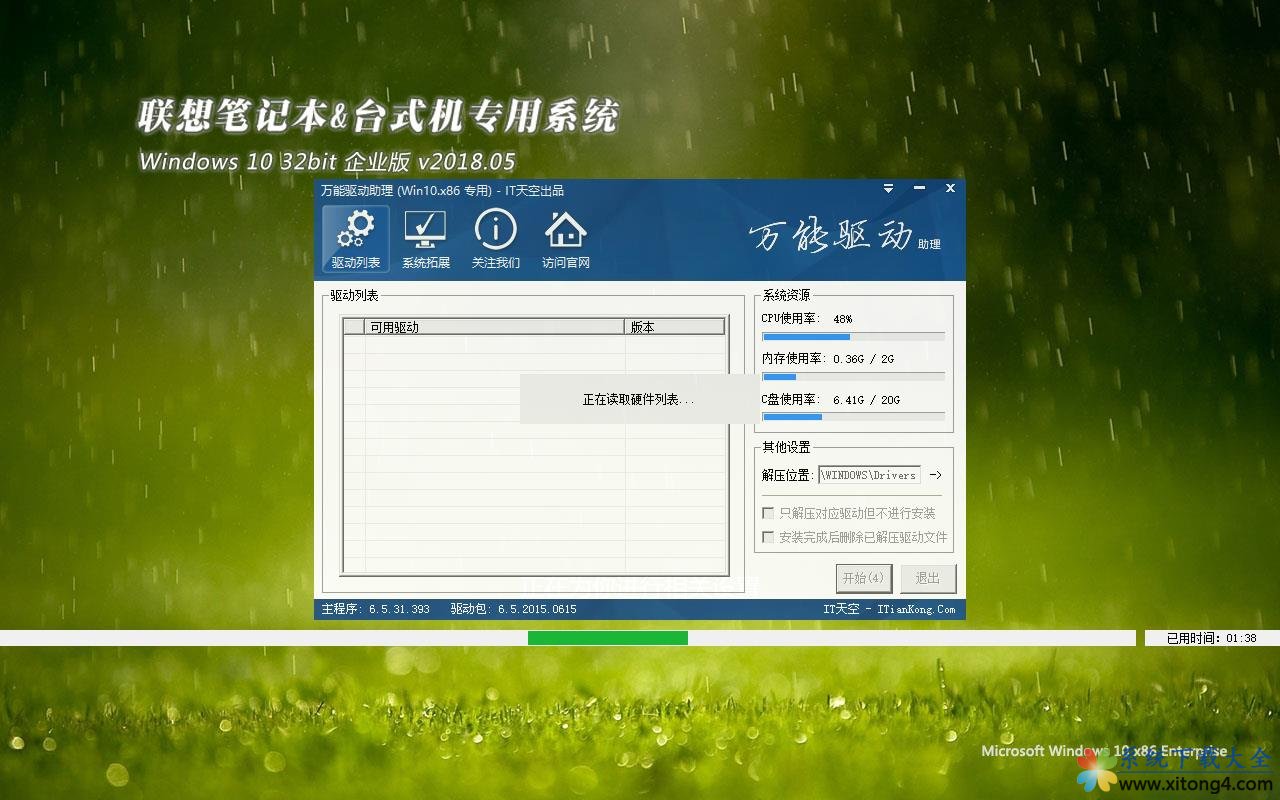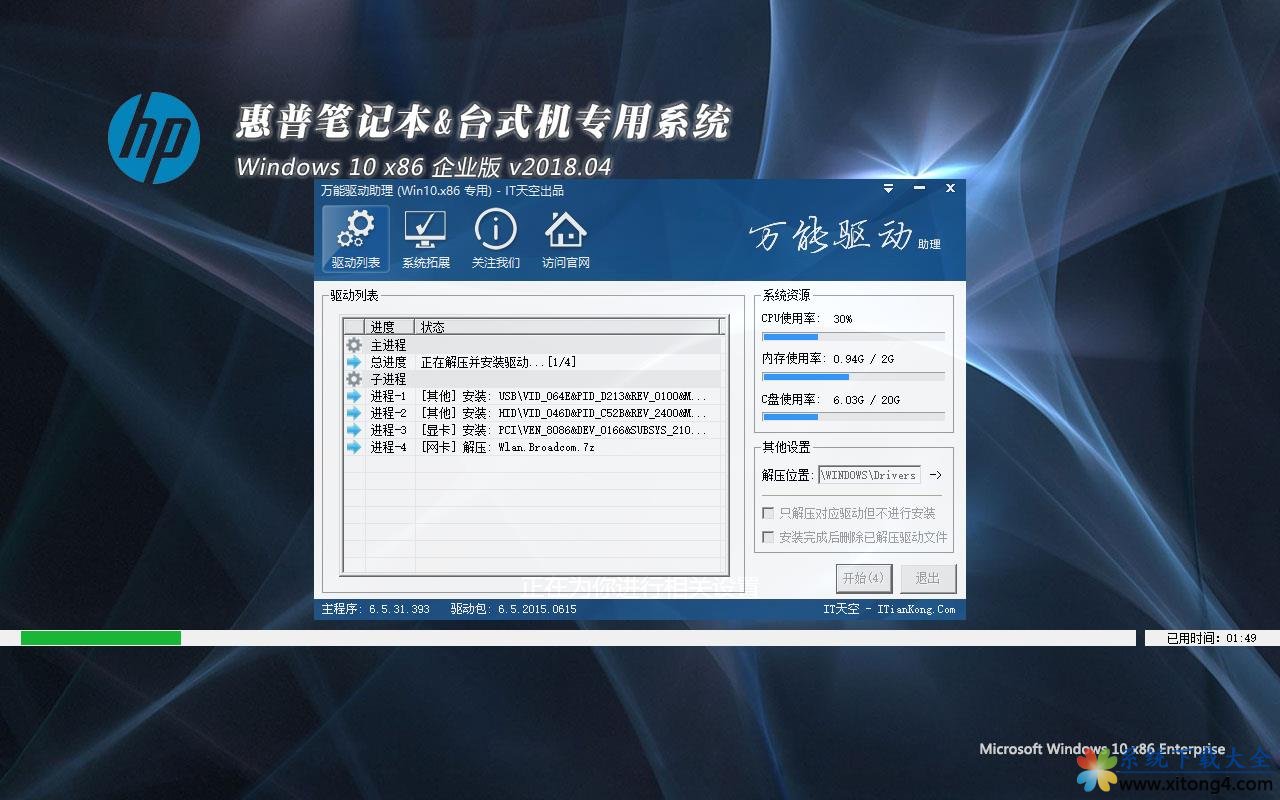LiteOS-A内核中的procfs文件系统分析
LiteOS-A内核中的procfs文件系统分析
作者:蒋卫峰 2022-12-07 15:56:33系统 OpenHarmony 本文介绍了LiteOS-A内核下proc相关目录信息,并且对LiteOS-A内核中procfs文件系统的原理和实现,结合源码进行了分析。
想了解更多关于开源的内容,请访问:
51CTO开源基础软件社区
https://ost.51cto.com
一、 procfs介绍
procfs是类UNIX操作系统中进程文件系统(process file system)的缩写,主要用于通过内核访问进程信息和系统信息,以及可以修改内核参数改变系统行为。需要注意的是,procfs文件系统是一个虚拟文件系统,不存在硬盘当中,而是系统启动时动态生成的文件系统,储存在内存中。procfs文件系统通常挂载在/proc目录下。LiteOS-A是OpenAtom OpenHarmony(以下简称“OpenHarmony”)系统中使用的轻量系统内核,实现了procfs文件系统。本文主要对LiteOS-A内核中的procfs文件系统的设计、实现和使用进行介绍和分析。procfs文件系统是LiteOS-A内核文件系统的一个案例,通过了解procfs文件系统,能够熟悉LiteOS-A的文件系统框架,并很好地将内核信息通过文件系统反馈给使用者。
1、Linux系统中的procfs文件系统包含的内容
Ubuntu 20.04中的/proc文件信息如下:
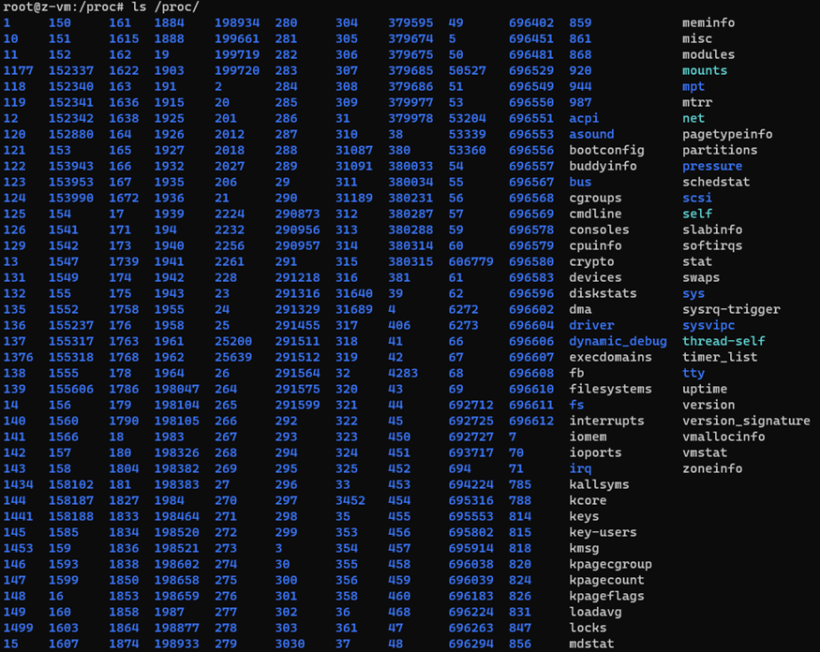
图1:Ubuntu proc目录信息
2、OS-A系统的命令以及procfs文件系统的内容
LiteOS-A的命令集:
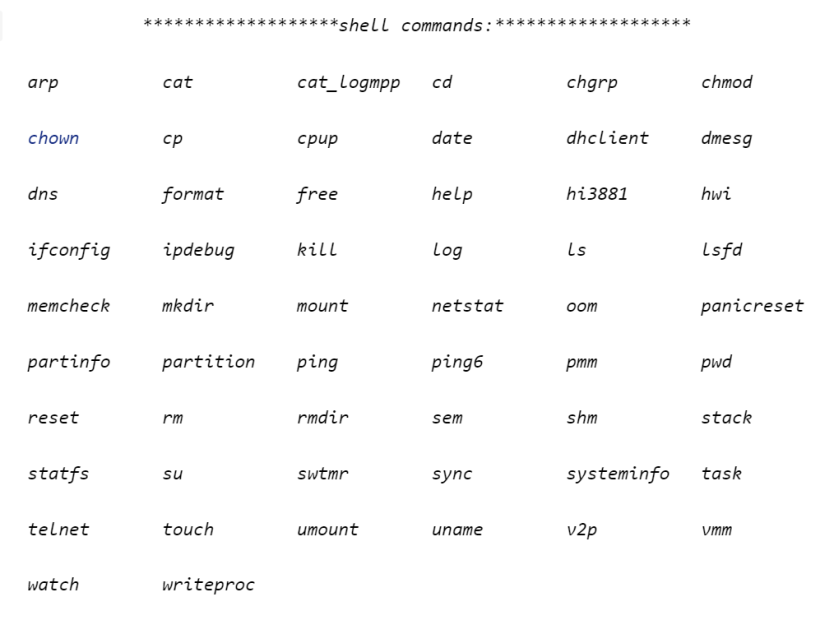
LiteOS-A的proc目录信息如下:
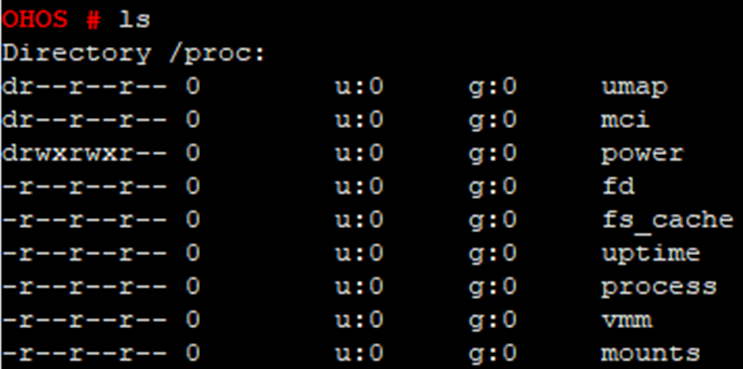
图2:liteOS-A proc目录信息
二、 procfs文件系统的设计
LiteOS-A中使用VFS作为各个文件系统的粘合层,而VFS在OpenHarmony内核中采用树结构实现,树中的每一个节点都是Vnode结构体。VFS提供统一的抽象接口用于屏蔽文件系统之间的差异,其提供三大操作接口用于统一不同文件系统调用不同接口的现状。VFS提供的三大操作接口:• VnodeOps• MountOps• file_operations_vfsVnodeOps用于控制Vnode节点,MountOps控制挂载点,file_operations_vfs提供常用的文件接口。文件系统各自需要实现VFS提供的这三大接口,即实现系统本身需要的接口方法,让VFS能够调用这些接口即可。procfs文件系统虽作为一个伪文件系统pseudo-file system,但其仍旧需要实现上述接口。
1、VFS提供的重要接口
(1) Vnode 结构体:
struct Vnode {enum VnodeType type;int useCount; uint32_t hash;uint uid; uint gid; mode_t mode;LIST_HEAD parentPathCaches; LIST_HEAD childPathCaches;struct Vnode *parent; struct VnodeOps *vop; struct file_operations_vfs *fop;void *data; uint32_t flag;LIST_ENTRY hashEntry; LIST_ENTRY actFreeEntry;struct Mount *originMount;struct Mount *newMount; char *filePath; struct page_mapping mapping;};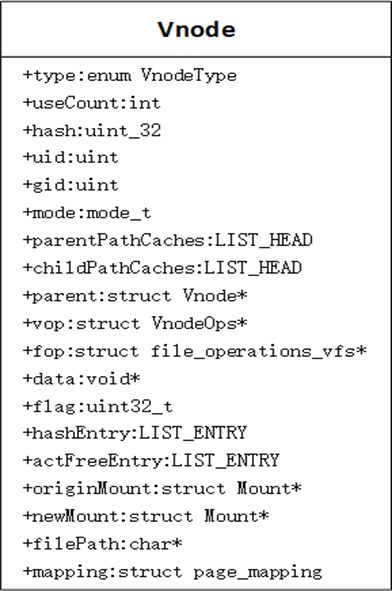
图3:Vnode structure
Vnode功能接口定义:
struct VnodeOps {int (*Create)(struct Vnode *parent, const char *name, int mode, struct Vnode **vnode);// 创建节点int (*Lookup)(struct Vnode *parent, const char *name, int len, struct Vnode **vnode);// 查询节点int (*Open)(struct Vnode *vnode, int fd, int mode, int flags);// 打开节点ssize_t (*ReadPage)(struct Vnode *vnode, char *buffer, off_t pos);ssize_t (*WritePage)(struct Vnode *vnode, char *buffer, off_t pos, size_t buflen);int (*Close)(struct Vnode *vnode);// 关闭节点int (*Reclaim)(struct Vnode *vnode);// 回收节点int (*Unlink)(struct Vnode *parent, struct Vnode *vnode, const char *fileName);// 取消硬链接int (*Rmdir)(struct Vnode *parent, struct Vnode *vnode, const char *dirName);// 删除目录节点int (*Mkdir)(struct Vnode *parent, const char *dirName, mode_t mode, struct Vnode **vnode);// 创建目录节点int (*Readdir)(struct Vnode *vnode, struct fs_dirent_s *dir);// 读目录节点信息int (*Opendir)(struct Vnode *vnode, struct fs_dirent_s *dir);// 打开目录节点int (*Rewinddir)(struct Vnode *vnode, struct fs_dirent_s *dir);// 定位目录节点int (*Closedir)(struct Vnode *vnode, struct fs_dirent_s *dir);// 关闭目录节点int (*Getattr)(struct Vnode *vnode, struct stat *st);// 获取节点属性int (*Setattr)(struct Vnode *vnode, struct stat *st);// 设置节点属性int (*Chattr)(struct Vnode *vnode, struct IATTR *attr);// 改变节点属性int (*Rename)(struct Vnode *src, struct Vnode *dstParent, const char *srcName, const char *dstName);int (*Truncate)(struct Vnode *vnode, off_t len);// 缩小或扩大int (*Truncate64)(struct Vnode *vnode, off64_t len);int (*Fscheck)(struct Vnode *vnode, struct fs_dirent_s *dir);int (*Link)(struct Vnode *src, struct Vnode *dstParent, struct Vnode **dst, const char *dstName);int (*Symlink)(struct Vnode *parentVnode, struct Vnode **newVnode, const char *path, const char *target);ssize_t (*Readlink)(struct Vnode *vnode, char *buffer, size_t bufLen);};Vnode根节点的初始化操作:
将全局Vnode表进行初始化,开始节点指向根目录/,全局节点g_rootVnode。
int VnodesInit(void){int retval = LOS_MuxInit(&g_vnodeMux, NULL);if (retval != LOS_OK) {PRINT_ERR("Create mutex for vnode fail, status: %d", retval);return retval;}LOS_ListInit(&g_vnodeFreeList);LOS_ListInit(&g_vnodeVirtualList);LOS_ListInit(&g_vnodeActiveList);retval = VnodeAlloc(NULL, &g_rootVnode);if (retval != LOS_OK) {PRINT_ERR("VnodeInit failed error %d\n", retval);return retval;}g_rootVnode->mode = S_IRWXU | S_IRWXG | S_IRWXO | S_IFDIR;g_rootVnode->type = VNODE_TYPE_DIR;g_rootVnode->filePath = "/";return LOS_OK;}(2) Mount结构体:
struct Mount {LIST_ENTRY mountList;const struct MountOps *ops;struct Vnode *vnodeBeCovered;struct Vnode *vnodeCovered;struct Vnode *vnodeDev;LIST_HEAD vnodeList; int vnodeSize; LIST_HEAD activeVnodeList; int activeVnodeSize; void *data;uint32_t hashseed; unsigned long mountFlags;char pathName[PATH_MAX]; char devName[PATH_MAX];};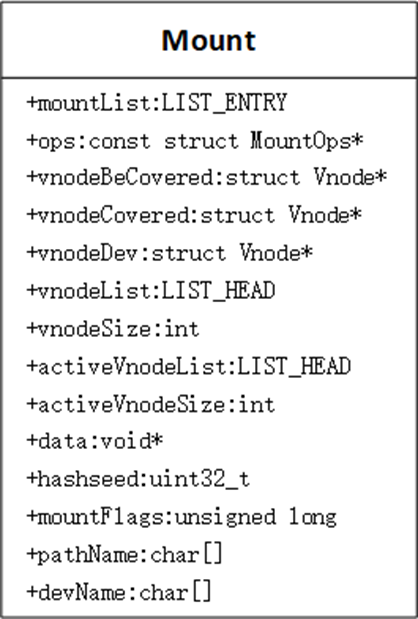
图4:Mount structure
挂载点的接口定义:
struct MountOps {int (*Mount)(struct Mount *mount, struct Vnode *vnode, const void *data);int (*Unmount)(struct Mount *mount, struct Vnode **blkdriver);int (*Statfs)(struct Mount *mount, struct statfs *sbp);//统计文件系统的信息,类型、大小等int (*Sync)(struct Mount *mount);};(3)文件结构定义:
struct file{unsigned int f_magicnum;intf_oflags;struct Vnode *f_vnode;loff_t f_pos; unsigned longf_refcount;char *f_path; void *f_priv; const char *f_relpath;struct page_mapping*f_mapping;void *f_dir;const struct file_operations_vfs *ops;int fd;};文件接口功能定义:
struct file_operations_vfs{int (*open)(struct file *filep);int (*close)(struct file *filep);ssize_t (*read)(struct file *filep, char *buffer, size_t buflen);ssize_t (*write)(struct file *filep, const char *buffer, size_t buflen);off_t (*seek)(struct file *filep, off_t offset, int whence);int (*ioctl)(struct file *filep, int cmd, unsigned long arg);int (*mmap)(struct file* filep, struct VmMapRegion *region);int (*poll)(struct file *filep, poll_table *fds);int (*stat)(struct file *filep, struct stat* st);int (*fallocate)(struct file* filep, int mode, off_t offset, off_t len);int (*fallocate64)(struct file *filep, int mode, off64_t offset, off64_t len);int (*fsync)(struct file *filep);ssize_t (*readpage)(struct file *filep, char *buffer, size_t buflen);int (*unlink)(struct Vnode *vnode);};2、文件系统的重要接口设计
procfs文件系统中每个目录或文件都是一个Vnode,也可以理解为一个entry。ProcDirEntry中的subdir指向的目录中的一个子项,其本质是一个单向链表的形式,并且采用头插法的形式进行节点的插入。
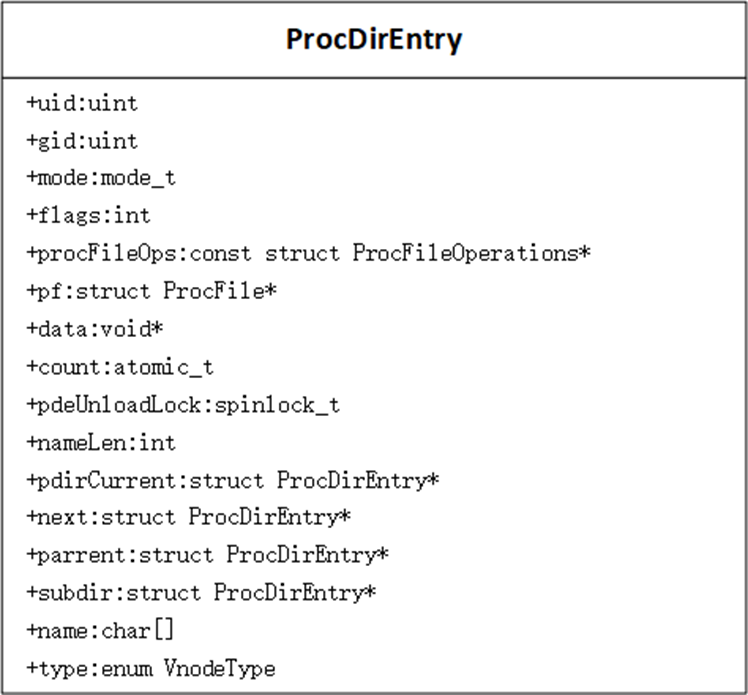
图5:DirEntry
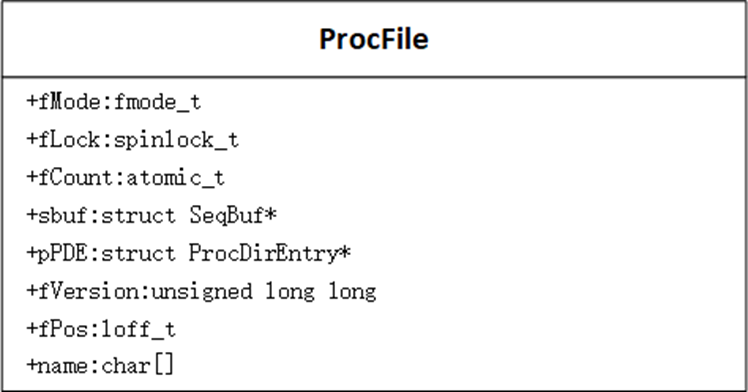
图6:ProcFile

图7:ProcData

图8: ProcFileOperations
三、 procfs文件系统的实现
1、Procfs的注册过程
(1)向系统注册文件系统入口函数:LOS_MODULE_INIT(ProcFsInit, LOS_INIT_LEVEL_KMOD_EXTENDED);
(2)向VFS文件系统表注册系统名以及实现的接口等:
const struct MountOps procfs_operations = {.Mount = VfsProcfsMount,.Unmount = NULL,.Statfs = VfsProcfsStatfs,};static struct VnodeOps g_procfsVops = {.Lookup = VfsProcfsLookup,.Getattr = VfsProcfsStat,.Readdir = VfsProcfsReaddir,.Opendir = VfsProcfsOpendir,.Closedir = VfsProcfsClosedir,.Truncate = VfsProcfsTruncate};static struct file_operations_vfs g_procfsFops = {.read = VfsProcfsRead,.write = VfsProcfsWrite,.open = VfsProcfsOpen,.close = VfsProcfsClose};// 注册文件系统名字以及实现的接口方法等FSMAP_ENTRY(procfs_fsmap, "procfs", procfs_operations, FALSE, FALSE);2、Procfs的初始化
初始化需要做的工作主要包括向OS注册procfs文件系统,生成procfs文件目录中的文件初始项,在liteOS-A具体包含目录power、mounts等。procfs文件系统的初始化流程大致如下:
// 系统的入口函数main(VOID)|-> OsMain() // ./liteos/kernel/liteos_a/kernel/common/main.c| // 进行系统的相关初始化工作| -> EarliestInit()| -> ...|| -> KModInit() |-> ... | |-> OsInitCall(LOS_INIT_LEVEL_KMOD_EXTENDED) // 生成procfs文件系统并挂载到/proc目录|-> InitLevelCall(level)//根据不同的级别进行相关初始化工作,procfs的级别是8,其级别是文件系统向OS注册的 | // ./liteos/kernel/liteos_a/fs/proc/os_adapt/proc_init.c | |-> ProcFsInit() // 进行procfs文件系统的具体初始化工作 | |-> mkdir(PROCFS_MOUNT_POINT, PROCFS_DEFAULT_MODE) // 先生成/proc目录,之后需要将procfs文件系统挂载到该目录下 | |-> mount(NULL, PROCFS_MOUNT_POINT, "procfs", 0, NULL) | | // 生成mount文件,包括分配Vnode和挂载Vnode | | | |-> ProcMountsInit() | | | // procfs具体项的初始化都写在一个独立的文件中,例如mounts在./liteos/kernel/liteos_a/fs/proc/os_adapt/mounts_proc.c | | | | | |-> ProcMountsInit(void) | | | // 创建mounts节点并挂载到该目录下,NULL位parent为父节点,若parent为NULL,则默认父节点为/proc | | | | | |-> CreateProcEntry("mounts", 0, NULL) | || // 先判断节点是文件属性还是目录属性,后选择具体的节点创建函数,在这选择File节点 | || | ||-> ProcCreateFile(parent, name, NULL, mode) | | |-> struct ProcDirEntry *pn = NULL | | |-> ProcAllocNode(&parent, name, S_IFREG | mode) // 具体的分配节点 | ||-> struct ProcDirEntry *pn = NULL; | || // 首先对节点的合法性进行相关检查,例如parent是否NULL,name是否NULL等 | ||| ||-> pn = (struct ProcDirEntry *)malloc(sizeof(struct ProcDirEntry));//分配一个struct ProcDirEntry内存地址 | || // 对生成的节点赋予一些属性,例如节点名字长度,权限,名字等,每个ProcDirEntry都需要指定一个ProcFile成员,里面含有具体信息 | || | ||-> pn->nameLen = strlen(lastName); | ||-> pn->mode = mode; | ||-> ret = memcpy_s(pn->name, sizeof(pn->name), lastName, strlen(lastName) + 1); | ||-> pn->pf = (struct ProcFile *)malloc(sizeof(struct ProcFile)); | ||-> pn->pf->pPDE = pn;// ProcFile的parent是生成的pn节点 | | | // 生成对应的节点,对节点指定相应的函数接口后,需要挂载的父节点中 | | | | | |-> ProcAddNode(parent, pn) | || // 先判断parent是否为NULL以及pn是否已经有parent,即判断是否已挂载 | || | || // 在这里可知一个目录下的子目录以及文件都是以一个单链表的形式存储的,且采用的是头插法,即最先生成的在最后面 | ||-> pn->parent = parent; | ||-> pn->next = parent->subdir; | ||-> parent->subdir = pn; | |->... | | | |->ProcPmInit() // 目录初始化工作 | | | // power目录下含有子目录,但是目录生成的过程都一样,在这以power文件夹为例 | | |-> struct ProcDirEntry *power = CreateProcEntry("power", S_IFDIR | S_IRWXU | S_IRWXG | S_IROTH, NULL); | | | |-> CreateProcEntry("power", S_IFDIR | S_IRWXU | S_IRWXG | S_IROTH, NULL) | | | | |-> // 先判断节点是文件属性还是目录属性,后选择具体的节点创建函数,在这选择目录节点 | | | | | | | | | |-> ProcCreateDir(parent, name, NULL, mode) | | | | | | // 这里节点创建和挂载和上述文件节点创建一样,不再赘述 | | | | | | | | | | | |-> ProcAllocNode(&parent, name, S_IFREG | mode) // 具体的分配节点 | | | | | |-> ProcAddNode(parent, pn) | | | | | | | | | | | |-> ... | | |...四、procfs业务分析
1、procfs挂载过程分析
在procfs文件系统的挂载过程中,若使用qemu进行调试,则挂载的命令大致如下: mount -R -t procfs [Dir_Path]mount的系统调用间接调用procfs的mount接口。用户输入挂载命令后,引发系统调用SysMount开始逐层调用:
-> ... -> SysMount(const char *source, const char *target, const char *filesystemtype, unsigned long mountflags,const void *data) |--|-> 将路径,文件系统等转化之后调用mount ||-> mount(sourceRet, targetRet, (filesystemtype ? fstypeRet : NULL), mountflags, dataRet) || |-> //找到指定的文件系统 || |-> fsmap = mount_findfs(filesystemtype) || |-> mops = fsmap->fs_mops // 为mount节点指定mount的接口函数 || |-> //找到挂载目录对应的Vnode并且设置文件系统相关信息 || |-> VnodeLookup(target, &mountpt_vnode, 0) || | |->VnodeLookupAt(path, vnode, flags, NULL) || | ||-> //对目录变成绝对路径并且从全局Vnode链表中开始找 || | ||-> PreProcess(path, &startVnode, &normalizedPath) || | |||-> vfs_normalize_path(NULL, originPath, &absolutePath) || |-> mnt = MountAlloc(mountpt_vnode, (struct MountOps*)mops) || |-> mops->Mount(mnt, device, data)//进入具体的procfs文件系统的mount函数 || ||-> VfsProcfsMount(struct Mount *mnt, struct Vnode *device, const void *data) || || |-> VnodeAlloc(&g_procfsVops, &vp);//生成一个Vnode用于挂载mount节点和procfs文件系统的root节点 || || |-> root = GetProcRootEntry(); //获取procfs文件系统的根节点 || || |-> vp->data = root; //|| || |-> vp->originMount = mnt;// 将vp挂载在挂载目录所对应的mount节点上 || || |-> mnt->data = NULL; || || |-> mnt->vnodeCovered = vp;// mount节点挂载的Vnode是该文件系统,方便后续在mount链表中找挂载点 || || |-> vp->type = root->type; || |...2、节点的增加过程分析
关键代码如下:
temp = ProcFindNode(parent, pn->name);if (temp != NULL) {PRINT_ERR("Error!ProcDirEntry '%s/%s' already registered\n", parent->name, pn->name);spin_unlock(&procfsLock);return -EEXIST;}pn->parent = parent;pn->next = parent->subdir;parent->subdir = pn;为了更好地说明,假设目前已经在系统中生成了proc/和mounts节点,proc/节点就是该文件系统的根节点,此时两者的关系可以用下图表示:
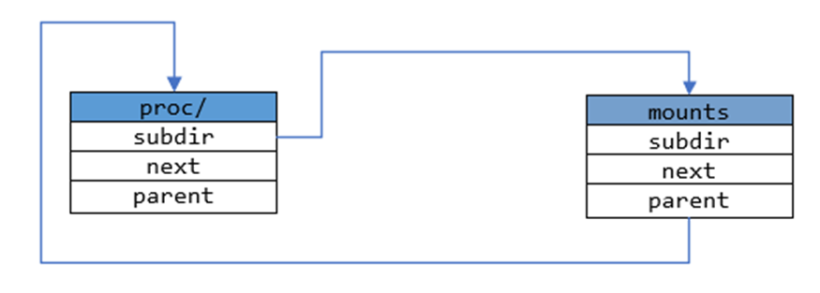
图9:层级目录的关系此时若需要在两者在插入一个power节点,则首先需要先生成一个power节点如下,再改变相应的指向即可,具体可以参考图10,给出三者之间的关系,最终的节点效果如图11。
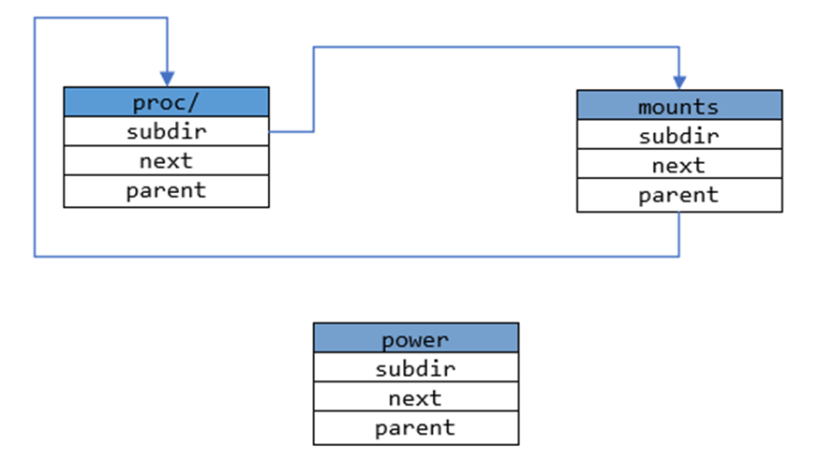
图10:生成一个新节点

图11:重新组合
3、writeproc shell命令的创建
liteOS-A中含有一个叫writeproc的shell命令,使用格式如下:writeproc value >>path。
shell命令的创建方式主要有两种,分静态注册和动态注册,writeproc命令使用静态注册方式进行注册,在本文中也主要介绍静态注册。shell开发的流程如下:① 定义一个新增命令所要调用的执行函数xxx。② 使用SHELLCMD_ENTRY函数添加新增命令项。③ 在链接选项liteos_tables_ldflags.mk中添加链接该新增命令项参数。④ 重新编译代码后运行。writeproc的注册如下:
// 定义一个具体的执行函数 int OsShellCmdWriteProc(int argc, char **argv); // 新增命令项 SHELLCMD_ENTRY(writeproc_shellcmd, CMD_TYPE_EX, "writeproc", XARGS, (CmdCallBackFunc)OsShellCmdWriteProc);writeproc的具体流程分析:①首先由用户按照命令格式进行输入。②OsShellCmdWriteProc函数对输入的命令进行分析,并采取相关的动作。
-> ...-> // 使用shell命令唤起writeproc注册函数-> writeproc value >> path |-> // 进行初始化工作,主要用于判断输入路径是否合法,节点是否存在 |-> struct ProcDirEntry *handle = NULL; |-> const char *rootProcDir = "/proc/"; |-> handle = OpenProcFile(realPath, O_TRUNC) // 若路径合法则找到对应的Vnode | |-> pn = ProcFindEntry(fileName) | | |-> int leveltotal = 0;// leveltotal用于判定文件所对应的层级,一个/表示一层 | | | // 遍历Vnode找到对应的Vnode并返回 | |-> pn->flags = (unsigned int)(pn->flags) | (unsigned int)flags// 设置节点相应的权限 | |-> ... | WriteProcFile(handle, value, len) // 找到文件句柄之后开始写入数据 | | // 使用Vnode的文件接口对ProcFile数据成员进行写入 | |-> result = pde->procFileOps->write(pde->pf, (const char *)buf, len, &(pde->pf->fPos)) |...根据文件名查找Vnode的关键代码:
pn = &g_procRootDirEntry; while ((pn != NULL) && (levelcount < leveltotal)) {levelcount++;isfoundsub = 0;while (pn != NULL) { next = strchr(path, '/'); if (next == NULL) {while (pn != NULL) {if (strcmp(path, pn->name) == 0) { spin_unlock(&procfsLock); return pn;}pn = pn->next;}pn = NULL;spin_unlock(&procfsLock);return pn; }len = next - path; if (pn == &g_procRootDirEntry) {if (levelcount == leveltotal) {spin_unlock(&procfsLock);return pn;}len = g_procRootDirEntry.nameLen; } if (ProcMatch(len, path, pn)) {isfoundsub = 1;path += len + 1;break; }pn = pn->next;} }五、总结
本文介绍了LiteOS-A内核下proc相关目录信息,并且对LiteOS-A内核中procfs文件系统的原理和实现,结合源码进行了分析。同时,通过writeproc shell命令介绍了procfs的使用。希望读者可以掌握LiteOS-A文件系统的基本知识,更好地运用于基于LiteOS-A内核的系统移植工作。
想了解更多关于开源的内容,请访问:
51CTO开源基础软件社区
https://ost.51cto.com。
责任编辑:jianghua 来源:51CTO开源基础软件社区 procfsLiteOS-A推荐系统
电脑公司Ghost Win8.1 x32 精选纯净版2022年7月(免激活) ISO镜像高速下载
语言:中文版系统大小:2.98GB系统类型:Win8电脑公司Ghost Win8.1x32位纯净版V2022年7月版本集成了自2022流行的各种硬件驱动,首次进入系统即全部硬件已安装完毕。电脑公司Ghost Win8.1x32位纯净版具有更安全、更稳定、更人性化等特点。集成最常用的装机软件,精心挑选的系统维护工具,加上绿茶独有
微软Win11原版22H2下载_Win11GHOST 免 激活密钥 22H2正式版64位免费下载
语言:中文版系统大小:5.13GB系统类型:Win11微软Win11原版22H2下载_Win11GHOST 免 激活密钥 22H2正式版64位免费下载系统在家用办公上跑分表现都是非常优秀,完美的兼容各种硬件和软件,运行环境安全可靠稳定。Win11 64位 Office办公版(免费)优化 1、保留 Edge浏览器。 2、隐藏“操作中心”托盘图标。 3、保留常用组件(微软商店,计算器,图片查看器等)。 5、关闭天气资讯。
Win11 21H2 官方正式版下载_Win11 21H2最新系统免激活下载
语言:中文版系统大小:4.75GB系统类型:Win11Ghost Win11 21H2是微软在系统方面技术积累雄厚深耕多年,Ghost Win11 21H2系统在家用办公上跑分表现都是非常优秀,完美的兼容各种硬件和软件,运行环境安全可靠稳定。Ghost Win11 21H2是微软最新发布的KB5019961补丁升级而来的最新版的21H2系统,以Windows 11 21H2 22000 1219 专业版为基础进行优化,保持原汁原味,系统流畅稳定,保留常用组件
windows11中文版镜像 微软win11正式版简体中文GHOST ISO镜像64位系统下载
语言:中文版系统大小:5.31GB系统类型:Win11windows11中文版镜像 微软win11正式版简体中文GHOST ISO镜像64位系统下载,微软win11发布快大半年了,其中做了很多次补丁和修复一些BUG,比之前的版本有一些功能上的调整,目前已经升级到最新版本的镜像系统,并且优化了自动激活,永久使用。windows11中文版镜像国内镜像下载地址微软windows11正式版镜像 介绍:1、对函数算法进行了一定程度的简化和优化
微软windows11正式版GHOST ISO镜像 win11下载 国内最新版渠道下载
语言:中文版系统大小:5.31GB系统类型:Win11微软windows11正式版GHOST ISO镜像 win11下载 国内最新版渠道下载,微软2022年正式推出了win11系统,很多人迫不及待的要体验,本站提供了最新版的微软Windows11正式版系统下载,微软windows11正式版镜像 是一款功能超级强大的装机系统,是微软方面全新推出的装机系统,这款系统可以通过pe直接的完成安装,对此系统感兴趣,想要使用的用户们就快来下载
微软windows11系统下载 微软原版 Ghost win11 X64 正式版ISO镜像文件
语言:中文版系统大小:0MB系统类型:Win11微软Ghost win11 正式版镜像文件是一款由微软方面推出的优秀全新装机系统,这款系统的新功能非常多,用户们能够在这里体验到最富有人性化的设计等,且全新的柔软界面,看起来非常的舒服~微软Ghost win11 正式版镜像文件介绍:1、与各种硬件设备兼容。 更好地完成用户安装并有效地使用。2、稳定使用蓝屏,系统不再兼容,更能享受无缝的系统服务。3、为
雨林木风Windows11专业版 Ghost Win11官方正式版 (22H2) 系统下载
语言:中文版系统大小:4.75GB系统类型:雨林木风Windows11专业版 Ghost Win11官方正式版 (22H2) 系统下载在系统方面技术积累雄厚深耕多年,打造了国内重装系统行业的雨林木风品牌,其系统口碑得到许多人认可,积累了广大的用户群体,雨林木风是一款稳定流畅的系统,一直以来都以用户为中心,是由雨林木风团队推出的Windows11国内镜像版,基于国内用户的习惯,做了系统性能的优化,采用了新的系统
雨林木风win7旗舰版系统下载 win7 32位旗舰版 GHOST 免激活镜像ISO
语言:中文版系统大小:5.91GB系统类型:Win7雨林木风win7旗舰版系统下载 win7 32位旗舰版 GHOST 免激活镜像ISO在系统方面技术积累雄厚深耕多年,加固了系统安全策略,雨林木风win7旗舰版系统在家用办公上跑分表现都是非常优秀,完美的兼容各种硬件和软件,运行环境安全可靠稳定。win7 32位旗舰装机版 v2019 05能够帮助用户们进行系统的一键安装、快速装机等,系统中的内容全面,能够为广大用户
相关文章
- 新浪微博登陆时为何总是要验证?_新浪微博
- win7系统怎么禁止文件加密
- win7系统怎么更改用户账户类型
- win7设置一直以管理员身份运行的win7怎么以管理员身份运行方法
- 电脑公司ghost win8.1系统U盘的具体安装方法
- Win8系统总是弹出用户账户控制的处理办法
- 双频wifi,本文教您双频无线路由器怎样设置
- Win10怎么升级到Win11
- 电脑关机后自动重启怎样处理?
- win10网络连接问题怎么修复 win10网络连接问题修复方法【步骤分享】
- U盘量产工具怎么用?U盘量产工具的使用方法
- 多屏幕刷新率 到底多少合适呢 这是个问题
- 打印机共享需要密码,本文教您处理win7打印机共享
- 跳过密码登录WinXP系统的技巧
- 升级win11后office是否还能用【详解】
- win10安全模式怎么卸载显卡驱动 win10安全模式卸载显卡驱动方法【详解】
- win8安装版系统之家旗舰版32位最新系统推荐
- 笔记本电脑怎么改密码 笔记本电脑改密码方法【详解】
热门系统
- 1华硕笔记本&台式机专用系统 GhostWin7 32位正式旗舰版2018年8月(32位)ISO镜像下载
- 2深度技术 Windows 10 x86 企业版 电脑城装机版2018年10月(32位) ISO镜像免费下载
- 3雨林木风 Ghost Win7 SP1 装机版 2020年4月(32位) 提供下载
- 4电脑公司 装机专用系统Windows10 x86喜迎国庆 企业版2020年10月(32位) ISO镜像快速下载
- 5深度技术 Windows 10 x86 企业版 六一节 电脑城装机版 版本1903 2022年6月(32位) ISO镜像免费下载
- 6深度技术 Windows 10 x64 企业版 电脑城装机版2021年1月(64位) 高速下载
- 7新萝卜家园电脑城专用系统 Windows10 x64 企业版2019年10月(64位) ISO镜像免费下载
- 8新萝卜家园 GhostWin7 SP1 最新电脑城极速装机版2018年8月(32位)ISO镜像下载
- 9电脑公司Ghost Win8.1 x32 精选纯净版2022年5月(免激活) ISO镜像高速下载
- 10新萝卜家园Ghost Win8.1 X32 最新纯净版2018年05(自动激活) ISO镜像免费下载
热门文章
常用系统
- 1笔记本&台式机专用系统 Windows10 企业版 2018年10月(32位) ISO镜像快速下载
- 2Win11企业版下载_Win11 64位中文企业版(稳定免激活)下载
- 3最新Win10专业版系统下载_2023新萝卜家园Win10专业版系统下载V2023.04
- 4新萝卜家园Ghost Win8.1 X64位 纯净版2020年9月(自动激活) ISO镜像高费下载
- 5雨林木风Win10 32位镜像下载_雨林木风Win10快速装机版永久激活下载V2021.04
- 6Win10纯净版下载_Win10 64位纯净版镜像(安全稳定)下载
- 7笔记本系统Ghost Win8.1 (X64) 全新纯净版2020年4月(永久激活) 提供下载
- 8不忘初心游戏版Win10系统_不忘初心Win10 22H2最新精简游戏版下载
- 9笔记本&台式机专用系统 Windows10 中秋特别 企业版 2020年9月(32位) ISO镜像快速下载
- 10深度技术GHOST WIN7 旗舰版64位 v2020.07最新免费下载

